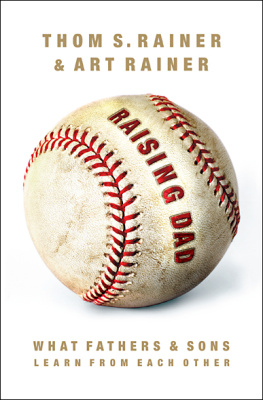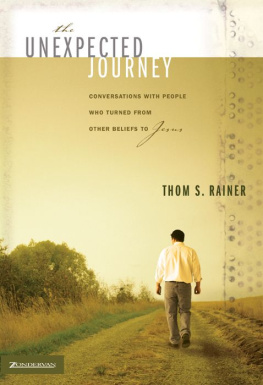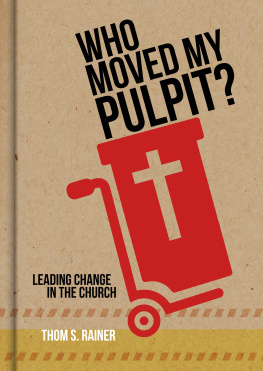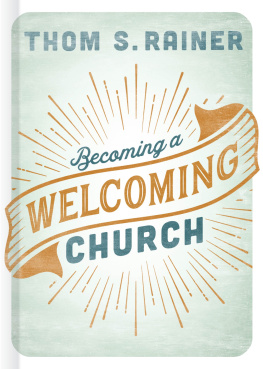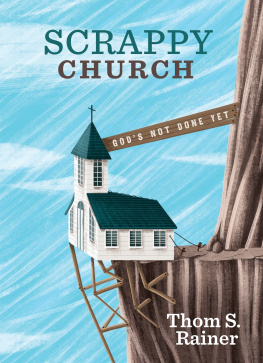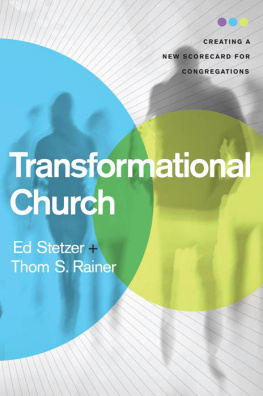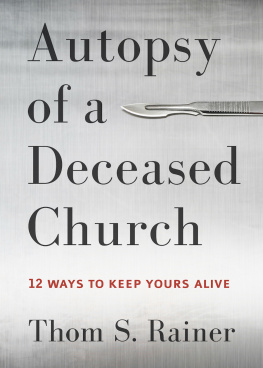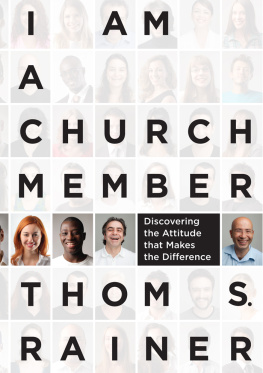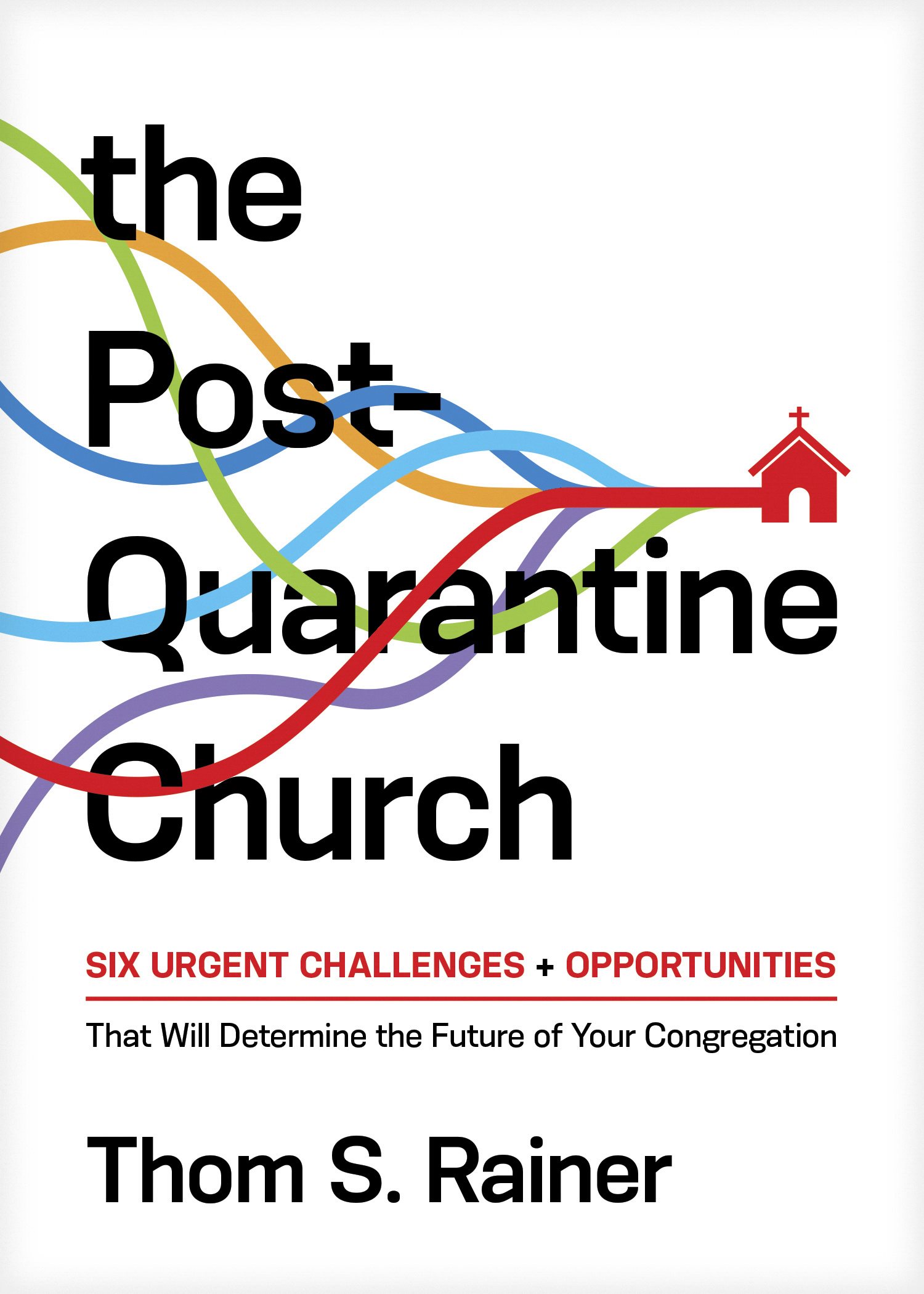Visit Tyndale online at tyndale.com.
Visit Tyndale Momentum online at tyndalemomentum.com.
Tyndale, Tyndales quill logo, Tyndale Momentum, and the Tyndale Momentum logo are registered trademarks of Tyndale House Ministries. Tyndale Momentum is the nonfiction imprint of Tyndale House Publishers, Carol Stream, Illinois.
The Post-Quarantine Church: Six Urgent Challenges and Opportunities That Will Determine the Future of Your Congregation
Copyright 2020 by Church Answers. All rights reserved.
Cover and interior illustration of merge arrows copyright Ivcandy/Getty Images. All rights reserved.
Cover and interior illustration of church icon copyright Nigarn/Shutterstock. All rights reserved.
Cover design by Jeff Miller, Faceout Studios.
Interior design by Dean H. Renninger.
All Scripture quotations are taken from the Holy Bible, New Living Translation, copyright 1996, 2004, 2015 by Tyndale House Foundation. Used by permission of Tyndale House Publishers, Carol Stream, Illinois 60188. All rights reserved.
For information about special discounts for bulk purchases, please contact Tyndale House Publishers at , or call 1-855-277-9400.
ISBN 978-1-4964-5275-7
ISBN 978-1-4964-5277-1 (ePub); ISBN 978-1-4964-5276-4 (Kindle); ISBN 978-1-4964-5278-8 (Apple)
Build: 2022-11-18 14:02:48 EPUB 3.0
To the church leaders in
the Church Answers community.
I am honored to serve you.
And always to Nellie Jo.
I am honored you said yes.
INTRODUCTION : AFTER THE QUARANTINE
Do you remember where you were?
Its a common question when talking about historic events. We like to recall exactly where we were and what we were doing when we heard about a great event or a tragic moment. In addition to remembering historic achievements such as landing a man on the moon, tearing down the Berlin Wall, and the Chicago Cubs winning a World Series, Ive been around long enough to recall four distinct tragedies, each separated by about twenty years.
Though I was only in third grade at the time, Ill never forget November 22, 1963.
Boys and girls, my teacher said with a surprising degree of emotion, I want you all to focus on the words Im about to say. I want you to remember this moment clearly the rest of your lives. President Kennedy has been shot and killed. He has been assassinated. The president is dead.
That was a hard dose of reality for a classroom of eight-year-olds, but ever since that day, I have been fascinated with the Kennedy assassination. I have my own theories about what happened, and some of my most prized collectibles and artifacts are connected to that sad day.
Fast-forward more than two decades. I was a full-time seminary student, working thirty hours a week at a bank to support my family. I can remember standing in the bank lobby on January 28, 1986, watching on television as the space shuttle Challenger lifted off from Cape Canaveral. I remember my confusion when, barely a minute into the flight, the rocket became a ball of fire with plumes of smoke shooting every which way.
It took me about thirty minutes to fully realize the Challenger was gone. Seven lives were lost, including that of Christa McAuliffe, the first schoolteacher to go into space.
Fifteen years after the Challenger explosion came the tragic event known simply as September 11. I was a seminary dean, and I went to chapel that morning in 2001with the knowledge that two planes had flown into the twin towers of New York Citys World Trade Center. But I didnt know why. By the time chapel was over, the towers had collapsed.
Another two decades later, we were struck by the global coronavirus pandemic, and nation by nation the world went into lockdown mode. Within two months, the unwieldy name for the virus 2019-nCoV or 2019 novel coronavirus had become COVID-19 or simply the virus.
Four tragic moments in history. Four events I will never forget. Four disasters that resulted in death.
But heres the thing about the fourth tragedy. I dont remember where I was when I first heard about COVID-19. The three previous catastrophes were tied to specific dates and times, but I heard about the virus in bits and pieces. There was no singular event like an assassination, a spaceship explosion, or planes crashing into towers. Our awareness grew only as the virus spread.
The COVID-19 pandemic likely spread to the United States in January 2020. We began to hear about people dying in China and Italy and elsewhere, but few of us were paying attention to the imminent threat to our own nation. The first known COVID-19 deaths in the United States occurred the following month.
Im not exactly sure when my wife and I began our COVID-19 quarantine. I remember recording podcasts with two guys in my office sometime in March. And I remember one of them saying he was headed home to Kansas City, where he might have to stay for a while because his company was suspending all travel. My self-quarantine would have started shortly after those podcasts, but I dont remember the date with precision.
Here are some other differences I observed: The first three events caused people to flood into churches. The fourth event, the virus, closed the churches doors for a season. And we knew when the first three events were over, but were still not entirely certain about the fourth.
I have only the vaguest memory of the Trump administration declaring a public health emergency on January 31, 2020. But I remember the quarantine. I clearly remember the quarantine.
The Quarantined Church
Historians will record the 2020 pandemic from a number of perspectives They will look at the tragedy of widespread death and other health issues. They will point to the state of urgency in hospitals and nursing homes. They will recall the ongoing updates on television and other media, and the daily scorecard that read like a war report: cases confirmed, deaths recorded, and recoveries made.
Stories will certainly be told from an economic standpoint. Companies and stores closing. Some closing permanently. Main streets, malls, and movie theaters emptied. Unemployment soaring. Government assistance and funds flooding forth, encouraging some and frustrating others. Stock markets tanking, then recovering, then becoming unpredictable again.
It will take years before the full emotional and mental toll can be assessed. But it will indeed be a topic of interest for historians, psychologists, counselors, and the news media. We dont know the full story. But we will likely be surprised by how devastating COVID-19 was to the global psyche.
Through my blog, webinars, and church consultations, I walked with tens of thousands of church leaders through the pandemic. I coached many leaders directly and spoke or wrote to nearly a million others. I observed the uncertainty and angst that began when the first in-person worship service was canceled. I witnessed the fallout that followed.
In the early days of the quarantine, I worked with church leaders primarily on issues of finance and giving. The financial support for many of these churches came primarily through the offering plate. Consequently, with no in-person worship services, there was no offering. With no offering, there were no incoming funds to support the ministries of the church.
As you can imagine, there was an abundance of concern.
I almost wrote, there was panic, but that would have been misleading and unfair. With few exceptions, there was more faith than fear. More perseverance than panic. These church leaders trusted God wherever he would lead them. But the church leaders were also feeling challenged because they really didnt know where God was leading them.


